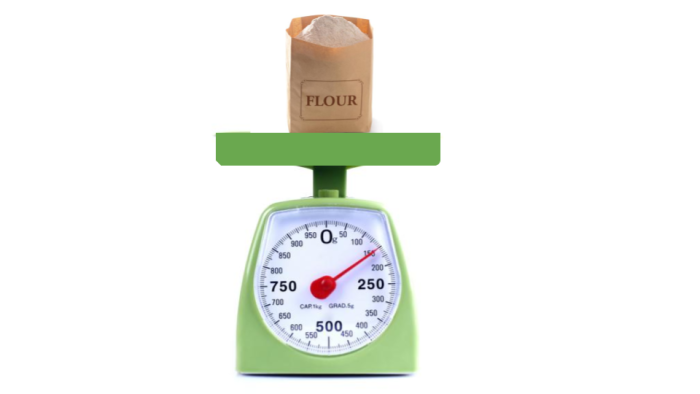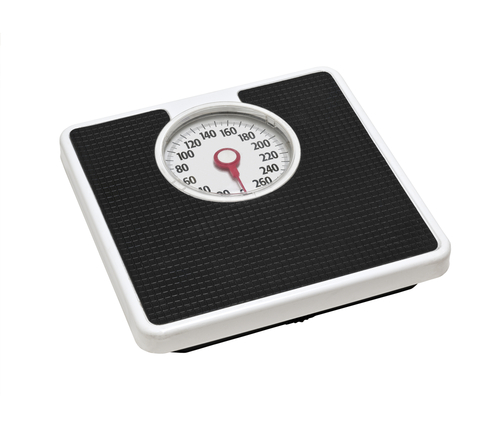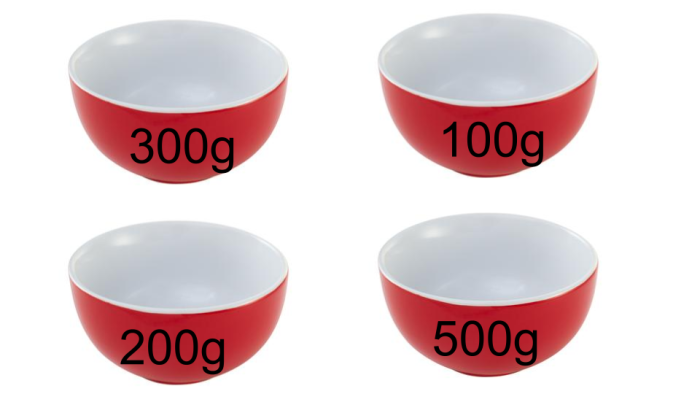In this activity, we will compare and order mass with the use of signs >, < and =
> means greater than
< means smaller than
= means equal which means the same
Remember that the biggest number is always at the big opening. Think of this as being like a crocodile who is always hungry - his open mouth always gobbles up the bigger number.

Measuring mass
Measuring mass means measuring how much something weighs.
We use scales to measure how much something weighs and we weigh in grams or kilograms.
We measure our ingredients to make a cake using grams, or we just write g for short.
We measure bigger things, like ourselves in a bigger weight called kilograms, we write kg for short.

Here, these scales are measuring the mass of this bag of flour. It weighs 150 grams, or 150 g.

Here, these scales would measure the weight of a person, and this measures in kilograms.
A child may weigh around 20 kg.
We are going to be answering two types of questions.
We will be comparing weights using these symbols and ordering weights from smallest to largest.
Let's have a look at some examples.
Example 1
Fill in the missing symbol: >, < or =
50 g .gif) 100 g
100 g
Answer
Which mass is bigger?
Let's say that each spoon is holding 50 grams of sugar:
 = 50 g
= 50 g

 = 100 g
= 100 g
Here, we can see that 100 g is bigger because 100 is a bigger number than 50.
So all we need to do is look for the bigger number and then choose the correct sign!
Remember, that the crocodile eats the biggest number so it will eat the 100 g like this:
50 g  100 g
100 g
This reads that 50 g is smaller than 100 g.
Example 2
Can you put these weights in order from smallest to largest?

Answer
We need to order these from smallest to largest so we need to start with the smallest number, which is 100 g.
Each measurement is in hundreds, so if we count in hundreds we can see the order.
The numbers in bold are the numbers that we need to order:
100 g, 200 g, 300 g, 400 g, 500 g
This means to order these numbers from smallest to largest it is:
100 g, 200 g, 300 g, 500 g
Are you ready to have a go at some questions now?








